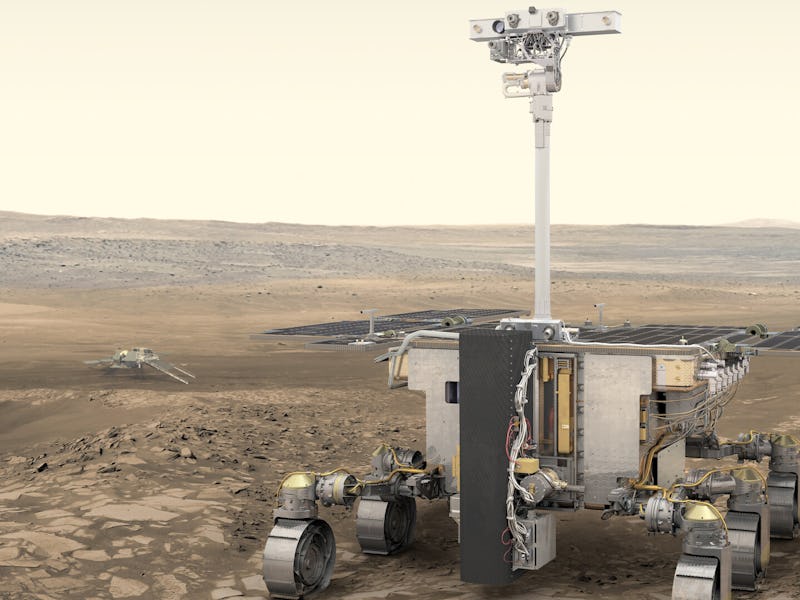Russian invasion of Ukraine derails a vital mission to find alien life on Mars
International space collaboration is in peril.

An audacious mission to hunt for evidence of past life on Mars just came to a screeching halt before it even made it to launch. A press release issued by the European Space Agency on Thursday, March 17 reveals the agency has suspended the second leg of its ExoMars mission. The mission was supposed to launch in September, and involve a Roscosmos-operated (Russia’s space agency) lander delivering an ESA rover named Rosalind Franklin to the surface of Mars — but the invasion of Ukraine put the mission in jeopardy.
The announcement shows how grave the future is for international space collaborations involving Roscosmos, which include the International Space Station. Here’s what you need to know.
What is ExoMars?
The ExoMars rover would have taken instruments designed to search for subsurface water on Mars, as well as scientific tools to look for organic compounds in subsurface samples — key indicators of past or present life on the Red Planet.
Some of those science instruments were to be provided by Roscosmos. But the war in Ukraine leaves the ESA in a bind: If Russia isn’t a willing or desirable partner for the mission, then the ESA would have to find an alternative to be able to launch ExoMars on time. That isn’t feasible, so ExoMars is on ice.
“As an intergovernmental organization mandated to develop and implement space programs in full respect with European values, we deeply deplore the human casualties and tragic consequences of the aggression towards Ukraine,” the agency writes in its announcement.
“While recognizing the impact on scientific exploration of space, ESA is fully aligned with the sanctions imposed on Russia by its Member States,” it reads.
The Rosalind Franklin rover and Kazachok lander were supposed to be the second leg of the ExoMars program. In 2016, ESA and Roscosmos sent an orbiter and a lander to the planet. The lander, Schiaparelli, was supposed to test landing technology for future missions and serve as an on-the-ground weather station, but crash-landed instead, leaving dark streaks near its intended landing site.
This before-and-after shows the aftermath of the crash of the Schiaparelli lander
What’s next for European space missions?
In the meantime, the agency says it is authorizing the director general of ESA, Josef Aschbacher, to “carry out a fast-track industrial study to better define the available options for a way forward to implement the ExoMars rover mission.” This leaves the future of ExoMars uncertain — but not exactly looking bright without a lander.
The decision not only sets back ExoMars indefinitely but also affects the timing of four other future missions that were slated to launch to space on Russian Soyuz rockets.
Those missions are:
- Galileo M10 and Galileo M11: These are part of a fleet of GPS satellites intended to help GPS reach populations in higher latitudes.
- Euclid: A near-infrared space telescope designed to hunt for dark matter and dark energy, two of the most mysterious forces in the universe that account for most of its mass.
- EarthCare: A collaboration with the Japanese space agency JAXA that would monitor Earth’s atmosphere, climate, and interactions with the Sun.
The ESA’s members constitute 22 European countries, and all of them will need to settle unanimously on an alternative provider to launch these missions without Roscosmos’ involvement.